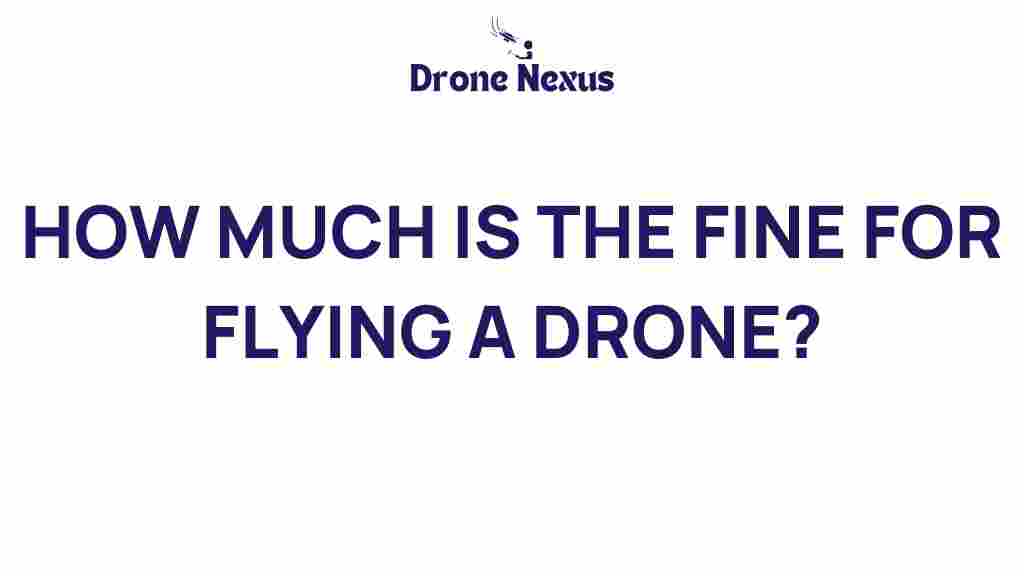Drone Fines: Unveiling the Consequences of Violating Regulations
As drone technology continues to evolve, so does the regulatory framework surrounding its use. While drones offer exciting possibilities in various fields, they also come with responsibilities. Understanding the fines associated with drone violations is crucial for operators to avoid costly penalties. In this article, we will explore the consequences of drone violations, outline the different types of fines, and provide tips on how to comply with regulations to prevent these penalties.
The Importance of Understanding Drone Fines
Drone fines can vary significantly depending on the nature and severity of the violation. These fines are not only punitive but also serve as a deterrent to ensure safe and responsible drone use. Familiarizing yourself with the potential consequences of non-compliance can help drone operators navigate the complex legal landscape.
Common Reasons for Drone Violations
Before diving into the specifics of drone fines, it’s essential to understand the common reasons operators face violations:
- Flying without a valid license or certification
- Operating in restricted airspace
- Failing to maintain visual line of sight
- Neglecting to register the drone
- Endangering people or property
Understanding Different Types of Drone Fines
Drone fines can be categorized into several types, depending on the violation. Here’s a closer look at what operators may face:
- Administrative Fines: These are typically imposed for minor violations, such as not having the drone registered. Fines can range from $100 to $500.
- Criminal Penalties: More severe violations, such as flying in restricted airspace, can lead to criminal charges. Fines may range from $1,000 to $25,000, coupled with possible imprisonment.
- Liability for Damages: If a drone causes damage to property or injures someone, the operator may be held liable for the costs associated with the incident. This can include medical bills, property repair costs, and more.
Step-by-Step Process to Avoid Drone Fines
To avoid drone fines, operators need to follow a structured approach to compliance. Here’s a step-by-step guide:
1. Get Certified
Before you fly, ensure you have the necessary certification. In the United States, for example, remote pilots must pass the FAA’s Part 107 test to operate commercially.
2. Register Your Drone
All drones weighing over 0.55 pounds (250 grams) must be registered with the FAA. Registration costs $5 and is valid for three years.
3. Know the Airspace
Familiarize yourself with the airspace classification in your area. Use apps or websites that provide information on restricted airspace. Always avoid flying in no-fly zones, which can include:
- Near airports
- Military bases
- National parks
4. Maintain Visual Line of Sight
Always keep your drone within your visual line of sight while operating. This is a crucial requirement to avoid potential collisions and ensure safety.
5. Respect Privacy Laws
Be aware of privacy regulations in your area. Avoid flying over private property without permission and respect the privacy of individuals.
6. Stay Updated with Regulations
Drone laws can change rapidly. Regularly check the FAA website or local aviation authority for updates on regulations and compliance guidelines.
Troubleshooting Common Issues That Lead to Drone Fines
Even the most diligent operators can face issues that might lead to drone fines. Here are some troubleshooting tips to help avoid common pitfalls:
1. Technical Malfunctions
Ensure your drone is regularly maintained. Check for firmware updates and perform routine inspections to prevent malfunctions that could lead to accidents.
2. Misunderstanding Regulations
If you’re unsure about a regulation, seek clarification. Join local drone clubs or forums to discuss with experienced operators. Sometimes, a simple conversation can clear up confusion.
3. Navigational Errors
Use reliable GPS systems and apps to help navigate airspace accurately. If you accidentally enter restricted airspace, land your drone immediately and avoid further violations.
4. Emergency Situations
In case of an emergency, have a plan in place to safely land your drone. Understanding how to handle emergencies can prevent accidents and subsequent fines.
What to Do If You Receive a Fine
Receiving a drone fine can be stressful, but it’s important to handle the situation calmly. Here’s what you should do:
- Read the Citation Carefully: Understand the nature of the violation and the amount of the fine.
- Collect Evidence: Gather any evidence that may support your case, such as flight logs or witness statements.
- Contact Authorities: If you believe the fine is unjust, contact the issuing authority for clarification or to dispute the fine.
- Consider Legal Advice: For serious violations, it may be wise to consult with an attorney who specializes in aviation law.
Conclusion: Stay Informed to Avoid Drone Fines
Drone fines can have significant financial and legal implications for operators. By understanding the regulations and taking proactive steps to comply, you can enjoy the benefits of drone technology without facing unnecessary penalties. Always stay informed about changes in regulations, and remember that knowledge is your best defense against drone fines. For further information on drone regulations, consider visiting the FAA UAS page for comprehensive guidelines.
This article is in the category Safety and created by DroneNexus Team
